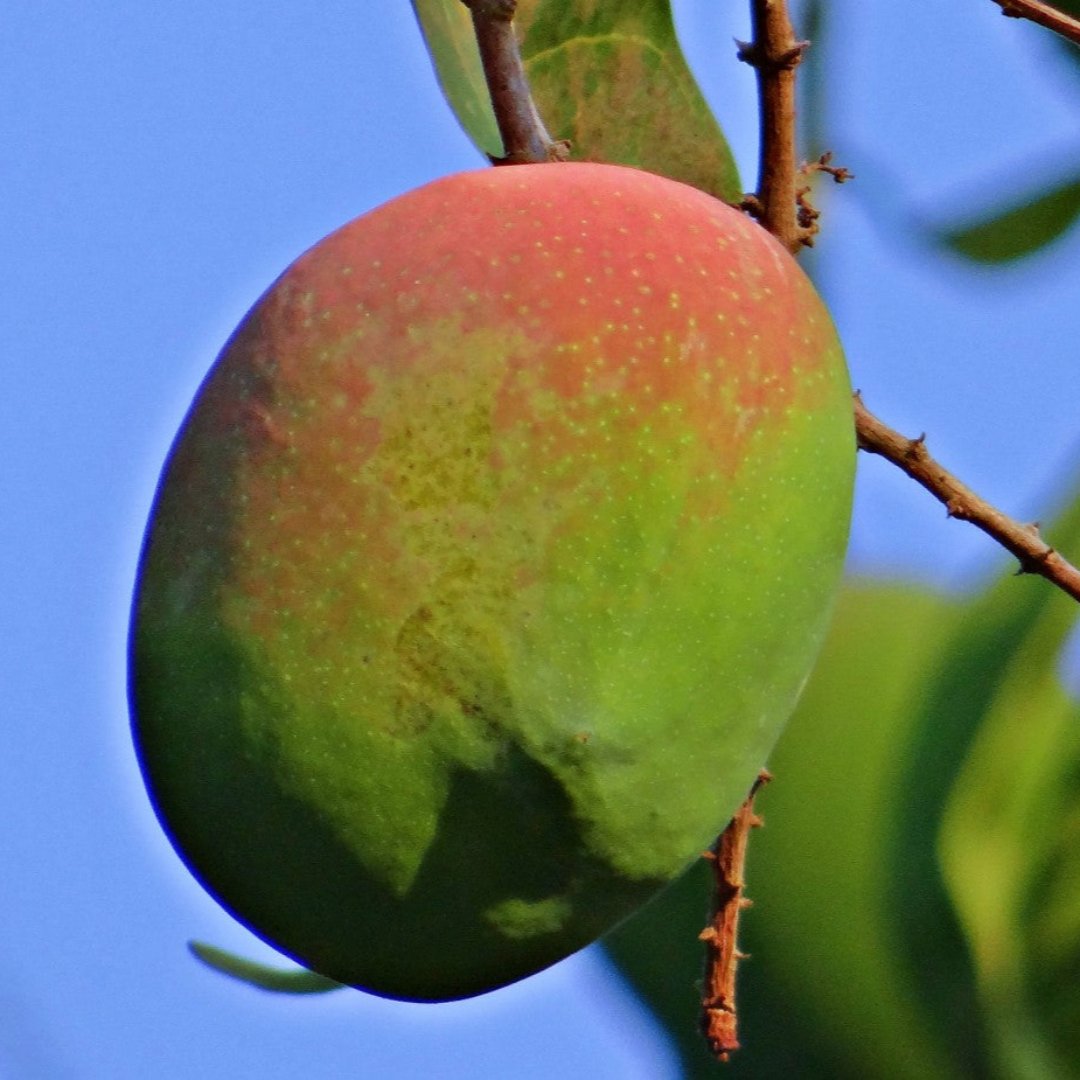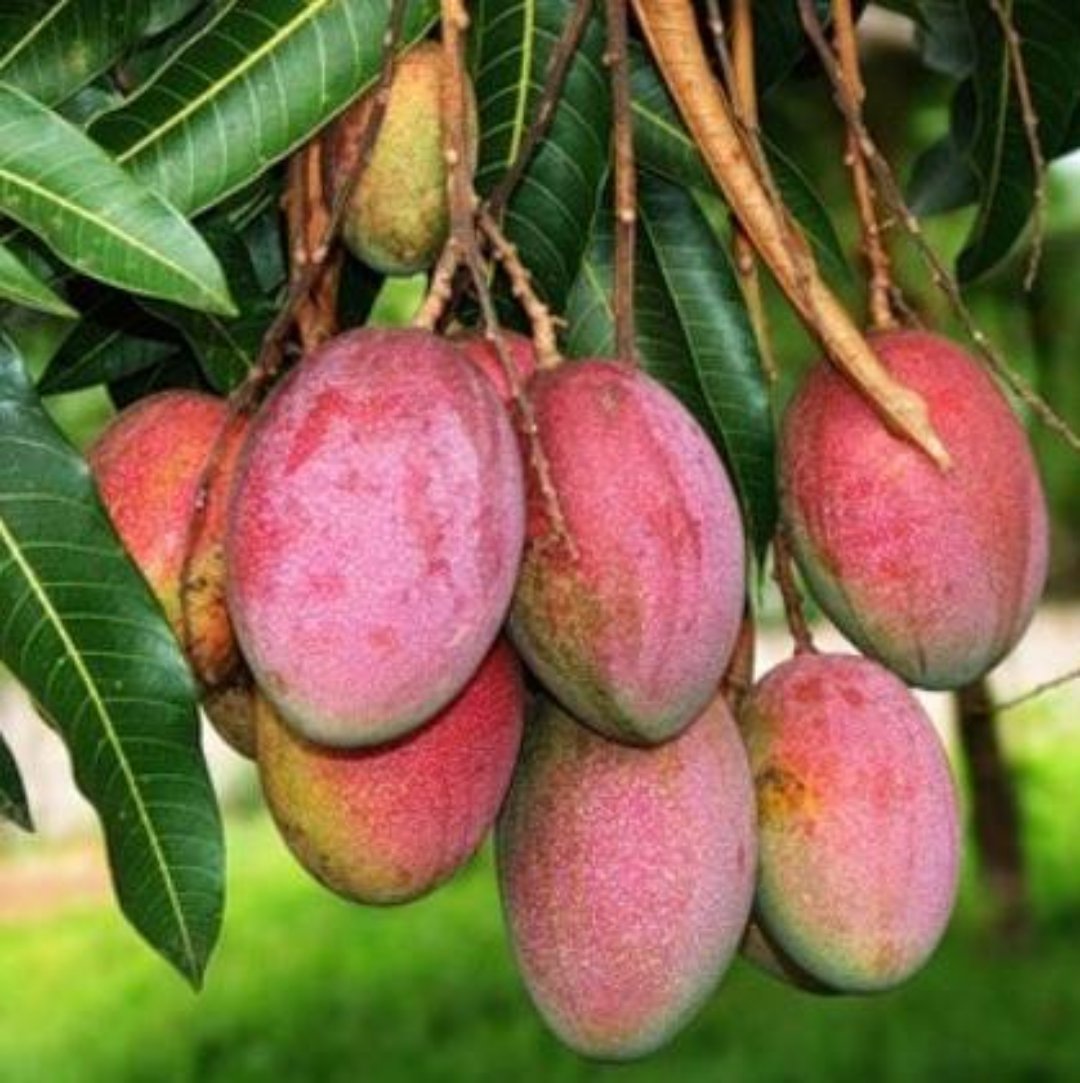


Exclusive Apple Mango Live Plant-Green Paradie Live
Rs. 874.00
Guaranteed Safe Checkout
Green Paradise Offer Healthy Apple Mango Plant
About Apple Mango
Apple Mango is a term commonly used to refer to a specific variety of mango known as the 'Alphonso' mango (scientific name: Mangifera indica). The Apple mango is a popular and highly prized cultivar, particularly in India, where it is considered the king of mangoes.
Here's some information about the Apple Mango or Apple mango plant:
Origin and Distribution:
The Apple mango is believed to have originated in the Ratnagiri district of Maharashtra, India. It is also grown in other regions of India, including Gujarat, Karnataka, and Tamil Nadu. Apple mangoes have gained international recognition and are exported to various countries, including the United States, the United Kingdom, and Middle Eastern countries.
Appearance and Taste:
The Apple mango is known for its vibrant golden-yellow skin with a tinge of red. The fruit is relatively small to medium-sized, with a characteristic oval or round shape. The flesh of the Apple mango is smooth, buttery, and fiberless. It has a rich, sweet, and aromatic flavor with notes of apricot, honey, and vanilla.
Growing Conditions:
The Apple Mango plant thrives in tropical and subtropical climates. It requires a long, hot summer with temperatures above 30°C (86°F) and a cool, dry winter. The trees prefer well-drained soil and are sensitive to waterlogging. They need full sun exposure to produce high-quality fruits.
Cultivation:
Apple mango trees are usually propagated through grafting or budding techniques. They are slow-growing trees, reaching a height of about 10-15 meters (33-50 feet) when mature. The trees bear fruit after 2-3 years of planting. Proper pruning and maintenance are necessary to ensure good fruit production and tree health.
Harvesting and Availability:
Apple mangoes are harvested during the summer months, typically from April to June in India. The fruits are handpicked when they reach maturity and are still firm. They are then ripened under controlled conditions to ensure optimal flavor and quality. Due to their popularity, Apple mangoes are in high demand, and their availability is limited to specific seasons.
Culinary Uses:
Apple mangoes are highly regarded for their exceptional taste and are often consumed fresh. They are also used in various culinary applications, such as making mango desserts, juices, milkshakes, ice creams, and preserves. The fruit's sweet flavor and creamy texture make it a popular choice for both sweet and savory dishes.
Nutritional Value:
Apple mangoes are not only delicious but also rich in essential nutrients. They are a good source of vitamins A and C, potassium, and dietary fiber. However, like other mangoes, they are relatively high in natural sugars, so they should be consumed in moderation as part of a balanced diet.
The Apple Mango plant has gained a reputation for its exquisite flavor, making it a sought-after variety in the mango world. Its unique taste and aroma have made it a favorite among mango lovers globally.
How To Grow Apple Mango Plant
To grow an apple mango plant, also known as the apple mango tree or Manila mango, you'll need to follow a few steps.
Here's a guide to help you get started:
Obtain a healthy mango seed:
Find a ripe apple mango and extract the seed from the fruit. Make sure the seed is clean and free from any residue.
Prepare the seed:
Remove the outer husk or skin of the seed by carefully using a knife or peeler. Take care not to harm the inner seed. Rinse the seed with water to remove any remaining fruit pulp.
Germination:
There are different methods to germinate a mango seed. One popular method is the "Baggie method":
- . Take a moist paper towel or a napkin and fold it.
- Place the seed inside the folded paper towel and gently press it.
- Put the paper towel with the seed inside a plastic bag, leaving some air inside for circulation.
- Seal the bag and place it in a warm location, around 77-86°F (25-30°C).
- Check the seed regularly for signs of germination. It may take several weeks for the seed to sprout.
Potting the seedling:
-
Once the seed has sprouted and grown a root and a small shoot, it is ready to be potted.
-
Select a pot with drainage holes and fill it with well-draining potting soil.
-
Create a small hole in the soil and place the seedling root down into the hole.
-
Cover the seedling gently with the soil, leaving the shoot above the soil surface.
-
Water the soil lightly, ensuring it remains consistently moist but not waterlogged.
Care and maintenance:
- Place the potted seedling in a warm, sunny location where it will receive at least 6-8 hours of direct sunlight each day.
- Water the plant regularly, keeping the soil consistently moist but not overly saturated.
- Fertilize the plant with a balanced, slow-release fertilizer every 2-3 months during the growing season.
- Prune the plant as needed to maintain its shape and promote healthy growth.
- Protect the plant from frost or extreme temperatures, as they can be detrimental to the mango tree.
Transplanting:
- After 1-2 years of growth, the mango tree may outgrow its pot and require transplantation.
- Select a larger pot or choose a suitable location in your garden with well-draining soil and ample sunlight.
- Carefully remove the plant from its current pot, trying not to damage the roots.
- Place the mango tree in the new pot or hole and backfill it with soil, ensuring the base of the trunk remains at the same level as before.
- Water the tree thoroughly after transplanting and continue regular care and maintenance.




